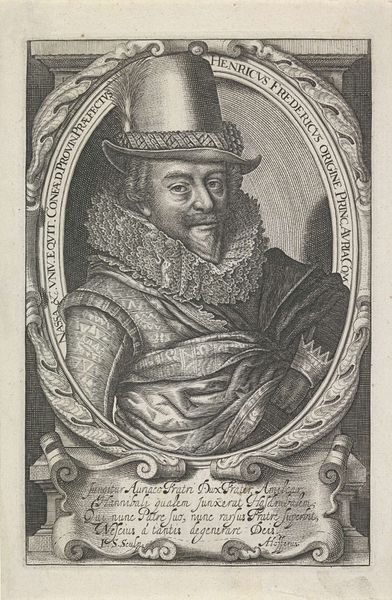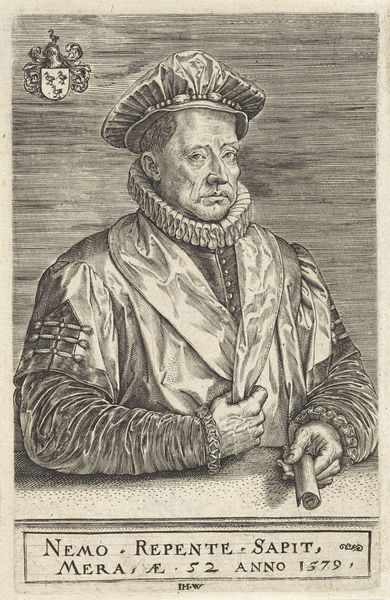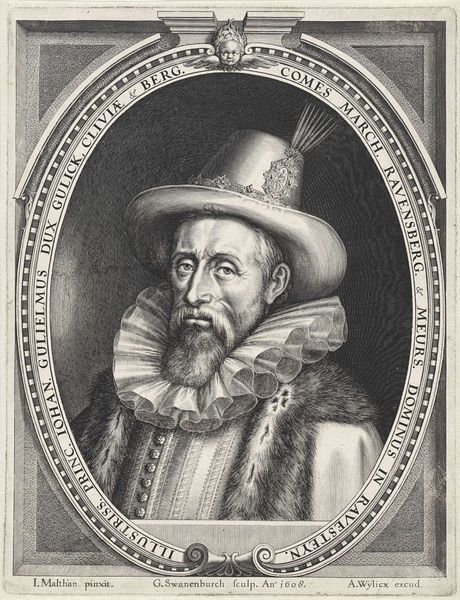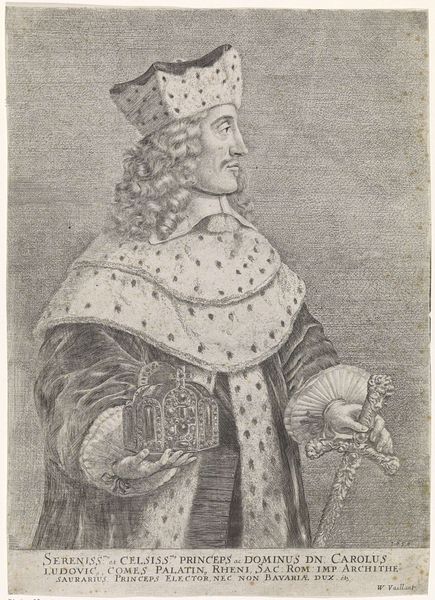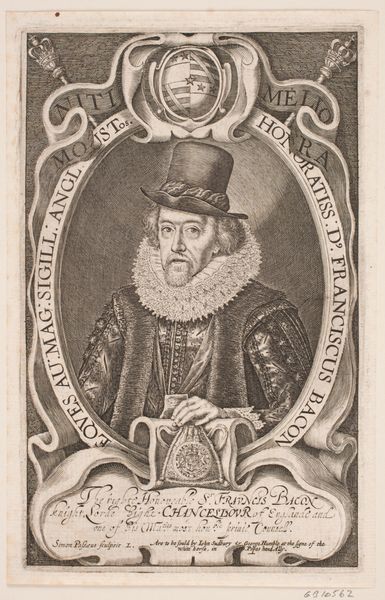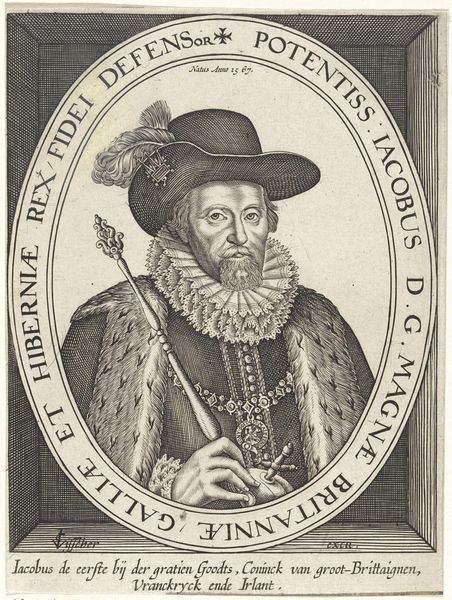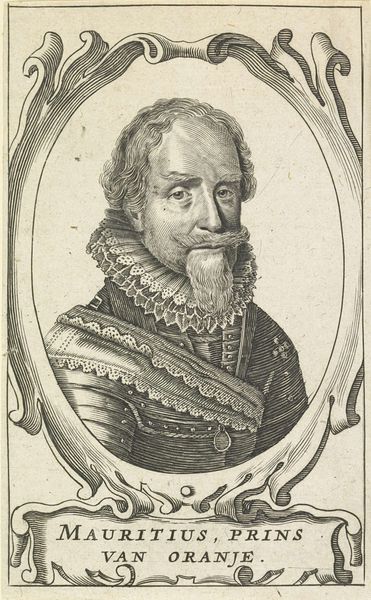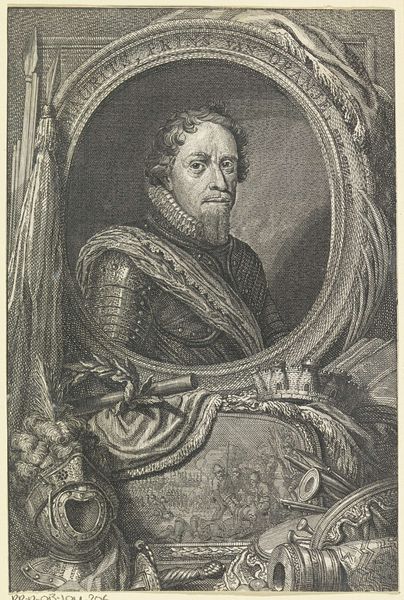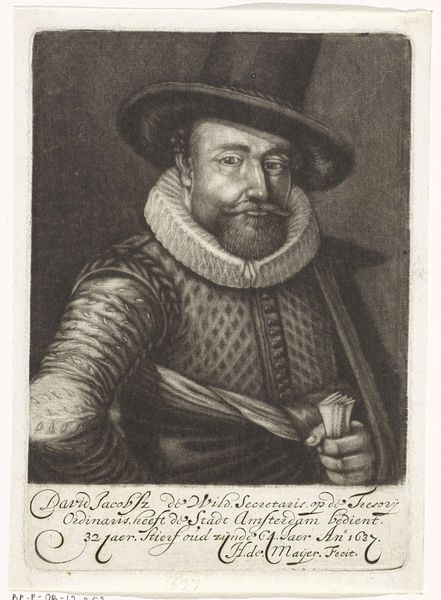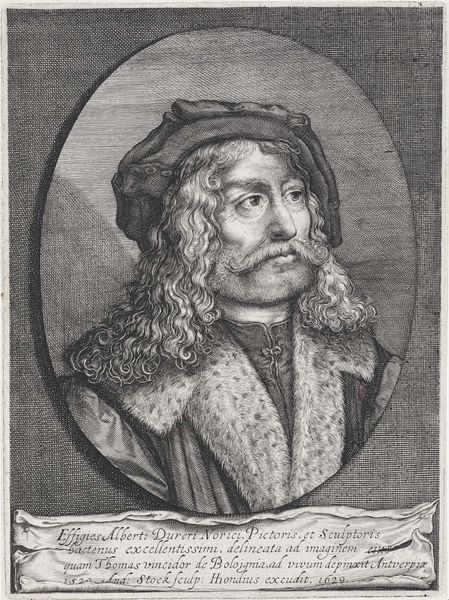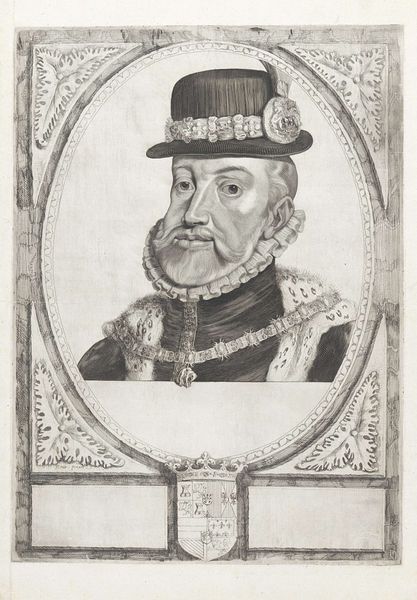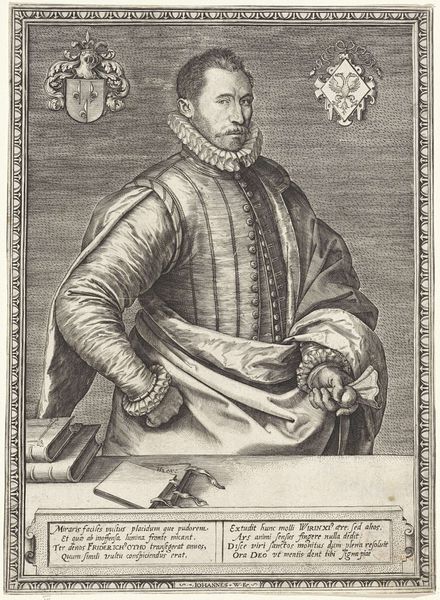
engraving
#
portrait
#
baroque
#
dutch-golden-age
#
form
#
line
#
history-painting
#
engraving
#
realism
Dimensions: height 468 mm, width 328 mm
Copyright: Rijks Museum: Open Domain
Curator: Ah, here we have "Portrait of Maurits, Prince of Orange." It's attributed to Crispijn van den Queborn, made sometime between 1612 and 1642. This work, currently held here at the Rijksmuseum, is an engraving. What are your initial thoughts? Editor: Stately! It feels very… proper. I imagine this gentleman would be terribly concerned with appearances, which, in all fairness, seems quite reasonable when one is governing a nascent country, eh? The detail is incredible; it must've taken enormous time to carve it into the metal. Curator: Absolutely. Engravings of this era were crucial for disseminating imagery and solidifying political power. A portrait like this isn't just about likeness; it’s about constructing an image of leadership, and establishing Prince Maurits as a capable leader during a tumultuous period of Dutch history. It showcases wealth and influence. Editor: You see that in his eyes, too—that very firm set to his mouth. You know, I imagine, or at least *I* tell myself that sitting for such a formal rendering of one's visage must have been quite tiring! The clothes are wonderfully oppressive. Curator: He presents an air of undeniable authority, further legitimizing his rule. It reminds me of those complex chess matches. But if you peel away the layers, you know, the strategic brilliance and political maneuvering…it's very good work. I'm fascinated with how artists portrayed authority at the time. And Queborn truly captured that. Editor: Well, all that rigid formality certainly lends itself well to the Baroque style, wouldn't you say? Yet, within this formality, the very real Prince's character seems to emerge. Just like with Frans Hals or Rembrandt a century later! You get the sense of a real person behind all the official regalia. A man with stories. Even secrets. It's…compelling. Curator: Indeed, and the details, like the delicate lace collar or the intricate design of his attire, all served to reinforce this message of prestige. Ultimately, this portrait serves as a powerful reminder of how carefully crafted and mediated images of power were during the Dutch Golden Age. Editor: It seems all of the portraits are artifacts of what once was! But a window into a bygone era with each line the artist draws and then presents for our examination. I'll take all that heavy grandeur along with a glimpse behind it. Thank you.
Comments
No comments
Be the first to comment and join the conversation on the ultimate creative platform.
